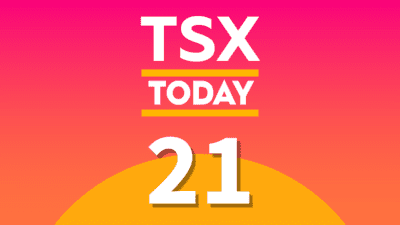If your retirement account is empty at age 40, don’t panic. With a sensible investment strategy and aggressive saving, it’s still possible for you to create a six-figure portfolio over the next 20 years. Buying a diversified portfolio of stocks and staying the course is key here.
My recommendation here is passively investing in low-cost exchange-traded funds, or ETFs. With no savings at 40, taking excessive risks with stock-picking isn’t ideal. A better way is to use an ETF as a core holding and supplement it with a few stock picks.
Here are my two favourite ETFs to get a retirement investment portfolio going. Both offer broad diversification, low fees, and are easy to understand.
Vanguard S&P 500 ETF
Everyone knows the S&P 500. This market-cap weighted index of 500 large-cap U.S. stocks is a very recognizable benchmark. It’s also very difficult for stock pickers to beat over the long term, having delivered a historical annualized return of around 10% since 1957.
A great ETF to buy the S&P 500 in Canada is Vanguard S&P 500 Index ETF (TSX:VFV). If you have a high risk tolerance and can bear volatility, going all-in on the S&P 500 is a time-tested way of supercharging your investment portfolio.
In terms of fees, VFV will cost you a management expense ratio of 0.09%. This is the annual percentage fee deducted from your investment. For example, a $10,000 investment in VFV would cost you around $9 annually. Keeping this as low as possible will help you maximize returns.
iShares Core Equity ETF Portfolio
The S&P 500 is great and all, but it’s not the most diversified. It’s missing Canadian stocks, international stocks, and most mid-cap and small-cap stocks. A better pick for maximum diversification here is the iShares Core Equity ETF Portfolio (TSX:XEQT).
XEQT is an asset-allocation ETF that holds U.S. stocks, Canadian stocks, and international stocks in roughly 50%, 25%, and 25% allocations. It’s a great way to passively match the world’s average return without needing to do any research or worry about which markets or sectors will outperform.
With XEQT, all an investor needs to do is buy and hold, reinvest dividends, and stay the course. You don’t have to worry about companies going bankrupt, how the market is doing, etc. XEQT holds thousands of global stocks, making it very safe, albeit still volatile. It costs a management expense ratio of 0.20%.
The Foolish Takeaway
Depending on your views for U.S. versus global stocks, either VFV or XEQT could be a good all-in-one option to kick-start your investment portfolio. If you’re starting this strategy at age 40, maximizing your savings rate and contributions will help even more. Make sure you reinvest all dividends and maintain a long-term perspective for success.










